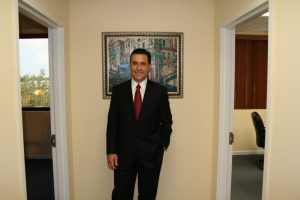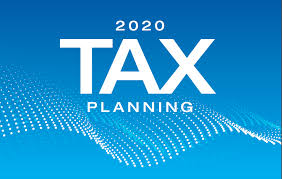When Good Tax Planning and Good Financial Planning Collide
Fresh from year-end tax planning meetings with clients, we’ve identified four areas where great tax planning and great financial planning collide, specifically for people accumulating wealth.
Many rely 100 percent on their wages to fund their lifestyle and are at their peak spending years. They have not built enough wealth for work to be optional yet. The following four areas of tax planning can offer them tax savings opportunities in the right situation, but applied without regard to the rest of the story, can be toxic to their survival.
Roth Contributions/Conversions: The Roth works in only one situation—when a client has no taxable income. The only people in this situation and enough assets to matter are usually retired but not yet 70 1/2. It takes time for the client to undo the brainwashing that has occurred about the benefits of the Roth. Why is the Roth a failure for most? The highest marginal bracket they will ever pay is while they are working. Plus, their peak earning years are also their peak spending years. They need every dollar they can muster and the tax planning help.
Most clients don’t realize the size of the nest egg required to recreate a top income tax earner perpetually during retirement. The projected top marginal rate for married filing jointly in 2012 is $388,000. Tax planning CPA’s assume a 4 percent earnings rate on assets to fund a happy retirement. It would take $9.7 million of assets to get to the highest marginal rate with zero itemized deductions. Few will reach the mark. The Roth calculations also ignore the preferential tax treatment of non-wage earnings which make up the vast majority of a retiree’s income and the desire of states to keep their retirees from moving to tax-free states. Take an example in Georgia. The first $65,000 of regular IRA distributions in 2013 are exempt if they are 65 or older. So anybody in Georgia who chooses a Roth is paying a 6 percent state tax they never have to pay.
401(k) Contributions: Let’s say a client avoided the Roth but took the advice of most articles they read on financial and tax planning: maximize your 401(k). This is toxic advice for most because it converts a liquid dollar to an illiquid dollar. Retirement plans are wonderful vehicles if you’re age 60, but are assets without benefits at 40. Those who survive financial hardships have one common theme: access to after-tax capital. In the financial crisis, how many drained their retirement accounts at a significant penalty to save their homes? Retirement assets take a perfectly useful dollar to a 40-year-old and toss it out the window for 20-plus years.
The tax planning decision to maximize the retirement plan should be multidimensional. Clients should have access to 30 percent of their net worth in after-tax liquid assets. Ask them how big of a check could they write tomorrow if the best opportunity or worst possible thing happened. It is usually a sobering number. Unfortunately, the only way to build an after-tax safety net is to acknowledge the tax costs of not making the maximum 401(k) contributions.
Debt: With interest rates this low, some bad CPA’s doing tax planning and do it yourself investors are wanting to leverage their home to make investments. Help them say no. Debt is a fixed and unwavering obligation. The probability of the mortgage payment is 100 percent, while the probability of investment success is not. Debt is an after-tax expense with a small rebate in the form of a deduction for the interest paid. Just like a business that takes on debt, it has to pay back the principal with after-tax dollars. Take a person with a $200,000 mortgage in the 33 percent marginal tax bracket in a tax-free state. They will have to earn nearly $300,000 to pay back the principal.
Everyone wants to make work optional, which means they have to create a pool of assets like stocks, bonds, or real estate that produce income to pay the bills. Someone without a mortgage can earn less money and be as happy as a person with a mortgage. Lowering the cash flow required to support happiness is invaluable. Take a $200,000 mortgage at a 3 percent rate. The payment on a 30-year mortgage is $900 per month or $10,800 per year. Clients ask advisors to generate enough investment income to cover their expenses.
An investment that pays 4 percent interest would need $270,000 to cover the payment with one problem: the IRS sits between the interest income and the mortgage payment. Using the same marginal tax rate, the client nets 2.68 percent in after-tax dollars. The client really needs $403,000 of assets dedicated to paying a $200,000 mortgage. They get a small rebate on the tax return, but they still have to spend a dollar to get the deduction. It would make more sense to eliminate the mortgage and have $203,000 invested instead.
Tax Planning for College
College Funding: The 529 plan, like the 401(k), is a great vehicle if a client has achieved personal liquidity goals. If not, they are making the exact same mistake, converting a dollar that can be used for anything to a dollar that can only be used for one thing. Many clients like the peace of mind of money being saved for college, but they also like having no debt and having a backstop against uncertainty. Since after-tax money funds the 529, the best tax planning suggestion is to save the money personally. It maintains maximum flexibility. Clients risking today to fund an unknown tomorrow is never a good idea.
Tax planning and tax savings don’t come cheap and they require either giving up or giving away assets for a period of time. As you meet with clients this tax season, open the discussion beyond the tax return, and explore tax planning strategies that will yield a maximum ROI. It will make you more valuable to your clients and help them make better financial decisions.
Welcome to the Gutenberg Editor
The goal of this new editor is to make adding rich content to WordPress simple and enjoyable. This whole post is composed of pieces of content—somewhat similar to LEGO bricks—that you can move around and interact with. Move your cursor around and you’ll notice the different blocks light up with outlines and arrows. Press the
How to Increase Profit Margins Through Virtual CFO Services
How to Increase Profit Margins Through Virtual CFO Services

Great Accounting Firms Share These 10 Traits
Great Accounting Firms Share These 10 Traits which has gone far beyond the paper-pushing days and now involves acting as a virtual CFO

Tax Accountant in Miami Cope with IRS Tax Season Delay
Tax Accountant said IRS delays start of tax season for individual returns would be postponed until February 17 with some as late as March

Miami Accountants Philosophy of Up or Out
Its up or out for Miami Accountants firms are faced with the dilemma of keeping long-term managers that are not ready to be equity partners or let them go.

Contadores en Miami Explican Auditorías del IRS
Contadores en Miami, Gustavo A Viera CPA, explica los pasos de una auditoría, desde la notificación de la auditoría hasta el cierre de la misma
Home » Blog » Accountants in Miami » When Good Tax Planning and Good Financial Planning Collide

